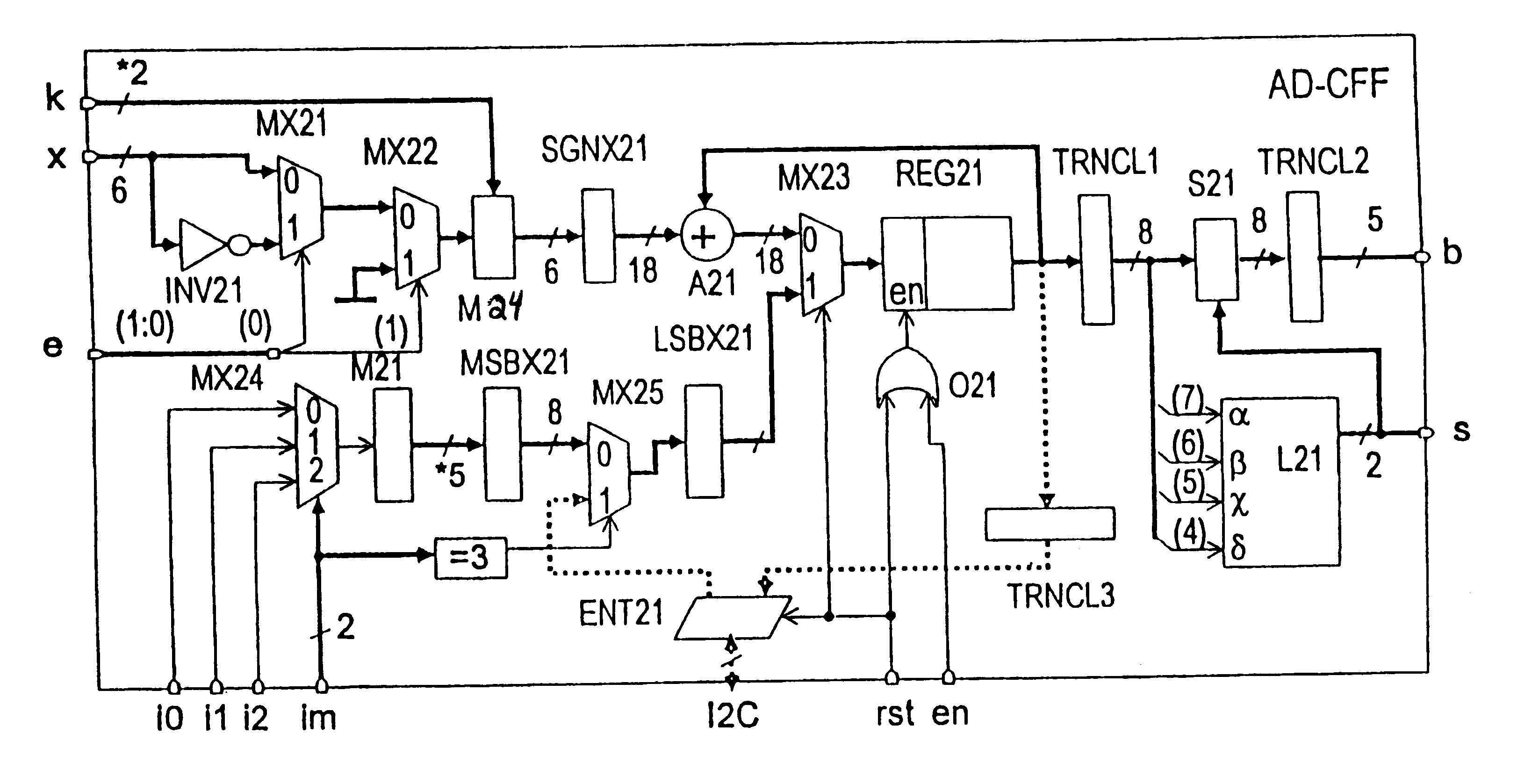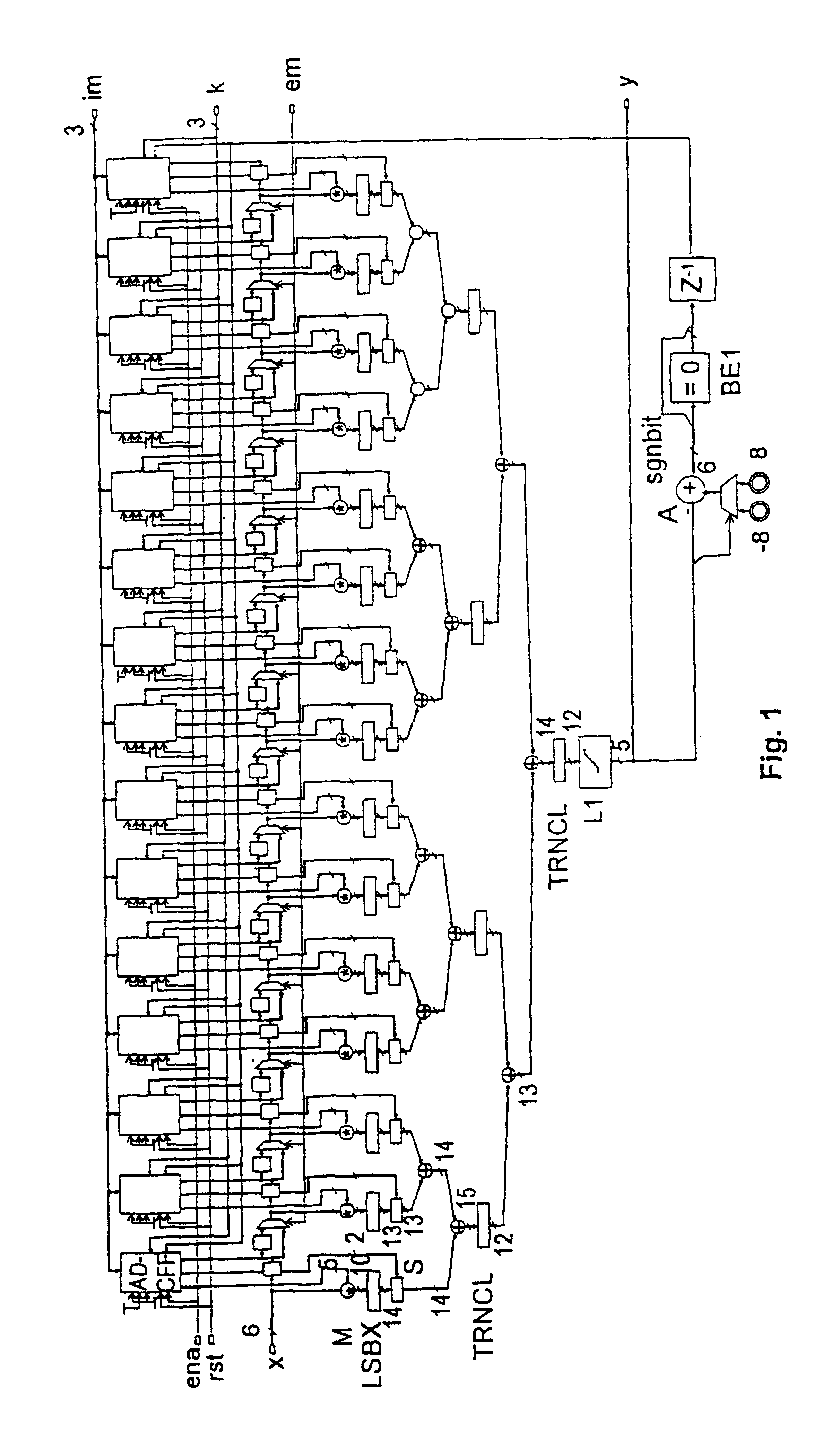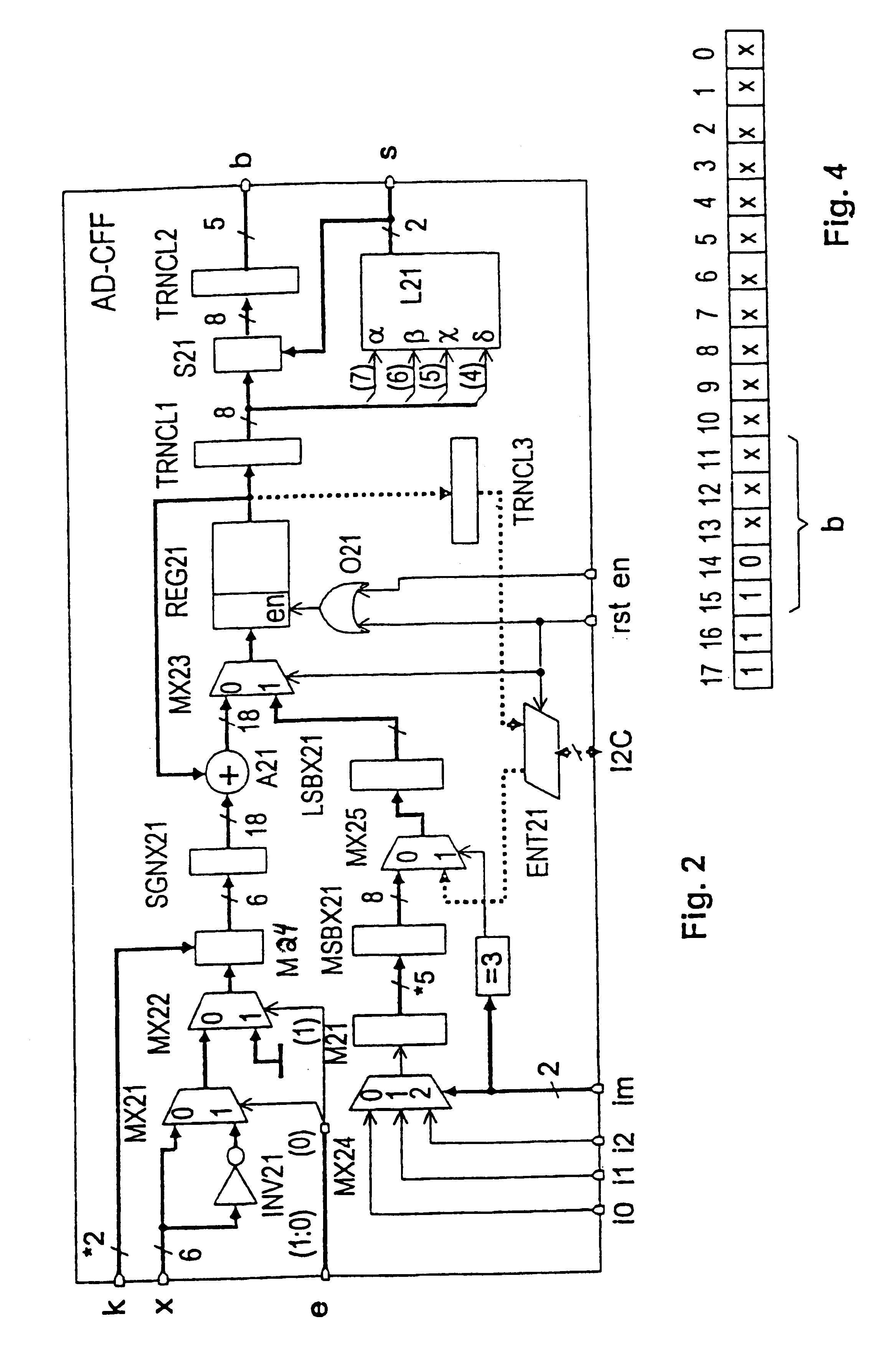Adaptive filter
- Summary
- Abstract
- Description
- Claims
- Application Information
AI Technical Summary
Benefits of technology
Problems solved by technology
Method used
Image
Examples
Embodiment Construction
FIG. 1 shows an exemplary embodiment of an adaptive filter containing 15 blocks AD-CEF for the coefficient adaptation of the kind illustrated in detail in FIG. 2. FIG. 2 shows a block for the coefficient adaptation AD-CEF having an input x, an output b and also an enable signal en, an input K for predetermined adaptation constants, an input im for an operating mode and an I2C input I2C for external driving. The input x is connected to a 0 input of a multiplexer MX21 via an inverter INV21. The output of the multiplexer MX21 is connected to a 0 input of a multiplexer MX22, the 1 input of which is connected to earth. Control lines of the two multiplexers MX21, MX22 are connected to the input e, the multiplexer MX21 being switched by bit 0 (LSB) and the multiplexer MX22 passes to an adder A21 via a multiplier M24, whose coefficient is set by the input k, and via a signed extension device SGNX21. The output of the adder A21 passes via the 0 input of a multiplexer MX23 to a register REG21...
PUM
 Login to View More
Login to View More Abstract
Description
Claims
Application Information
 Login to View More
Login to View More - R&D
- Intellectual Property
- Life Sciences
- Materials
- Tech Scout
- Unparalleled Data Quality
- Higher Quality Content
- 60% Fewer Hallucinations
Browse by: Latest US Patents, China's latest patents, Technical Efficacy Thesaurus, Application Domain, Technology Topic, Popular Technical Reports.
© 2025 PatSnap. All rights reserved.Legal|Privacy policy|Modern Slavery Act Transparency Statement|Sitemap|About US| Contact US: help@patsnap.com



